#sefirot tarot
Explore tagged Tumblr posts
Text
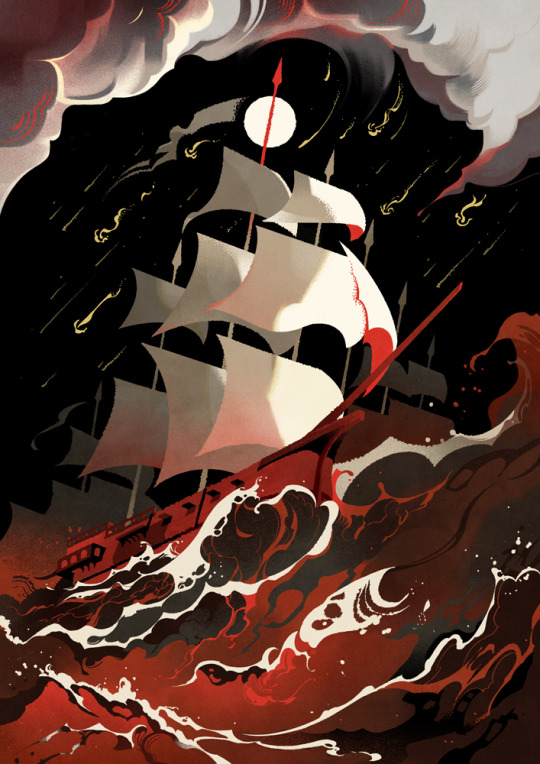
The despotic fleet, one of the main adversaries of the Dioscorian agents 🔥 The Hidden Isle
#illustrators on tumblr#artists on tumblr#illustration#ttrpg#the hidden isle#indie rpg#ttrpg community#nautical#maritime#seafaring#sefirot tarot#Sefirot#ocean
11K notes
·
View notes
Text


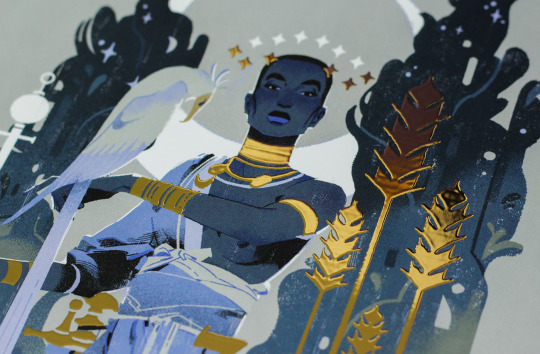

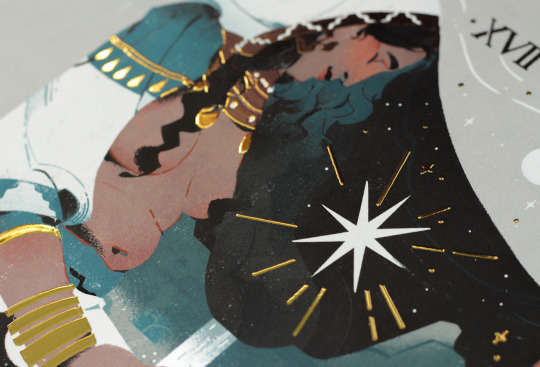
Shop stays open only until tomorrow, Nov 15th at 12pm CEST! Highlighting some of our gold foil Sefirot prints ✨ (don’t forget you can also bundle them and save some €€€ 🔥🔥 )
#artists on tumblr#illustration#art#tarot art#prints#i swear this is the Last Promo (i am withering)#sefirot#sefirot tarot#merch artist#tannenbaumpress
771 notes
·
View notes
Text
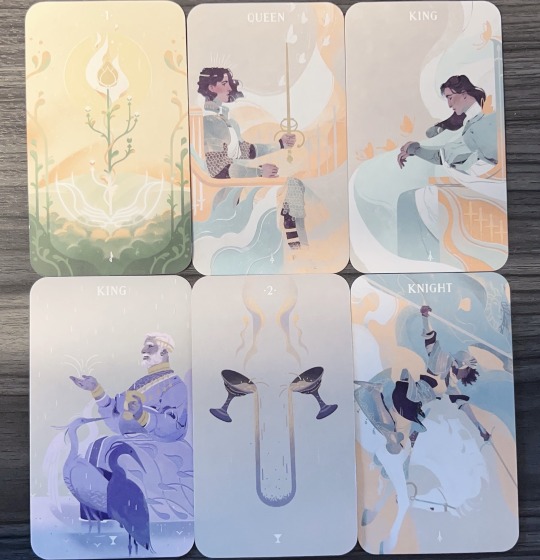
Ace of Wands: Heat, creativity, momentum, expulsion of blunt energy force. Circumstances in bloom. Project in bloom. Queen of Swords: The logical thinker, and gifted analytic. Enforcer of boundaries, distant from others. Going online. King of Swords: Analytical man of high mental caliber. A mind with calculated intentions. A restless and at times tormented mind. King of Cups: A loving man of sensitive nature. Prone to enjoy music in harmonious environments. Enjoys seeing everybody around him get along. Two of Cups: Loving mirror images of one another. Knight of Swords: Events happening quickly. Days passing quickly. Many conversations had over a short span of time. A surprise visit. Pain for the man, unexplored mental paths for the lady. Events flowing in motion.
#free tarot reading#free tarot readings#daily tarot#tarot community#tarot cards#sefirot game#sefirot tarot#spheres of heaven tarot#tarot#tarot deck#tarotblr#tarot reading#free tarot#divination#tarot diary#advice#cartomancy#tarot spread#tarot reader#tarot tips
31 notes
·
View notes
Text




Tarot deck + game I backed forever ago came in the other day! They're so pretty I love them so much. Can't wait to bond with them and use them c:
7 notes
·
View notes
Photo
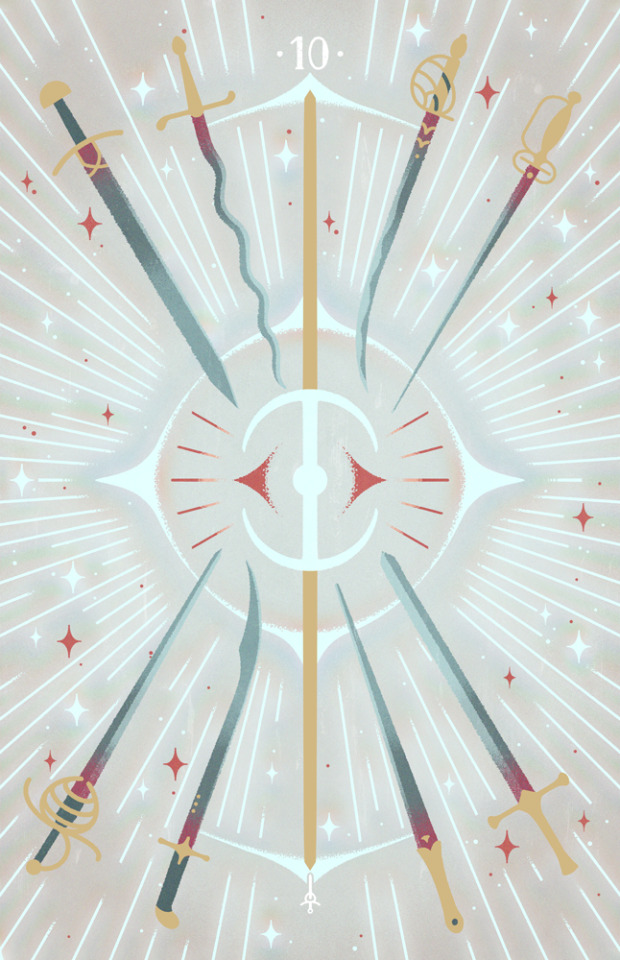
Ten of Swords. Art by Viv Tanner and Eli Baum, from Sefirot.
88 notes
·
View notes
Text
kickstarter

The Hidden Isle is a pen and paper RPG that uses Tarot cards instead of dice, set in the 16th century on the secretive island of Dioscoria. It focuses on roleplaying and collaborative storytelling.
This is a game about swashbuckling adventures across Europe and the Middle East, stealing forbidden texts from oppressive regimes, protecting an island of outcasts using ancient magic, and toppling empires with just the right speech at just the right time.

If you are familiar with Tarot then The Hidden Isle will resonate with you all the more, but no experience with Tarot is necessary. To help you feel like a mystical oracle and stay inspired, we’ll provide you with tables and guides to help you quickly understand each card draw.

Narrative heavy, rules light. While the game does have rules, their purpose is to enrich and drive your narratives. The game is designed as a collaborative storytelling experience.
Play and character growth intertwined. Each character has a burden—an emotional weight they carry—and an ideal to live up to. Become your truest self, or succumb to your worst impulses.

A vibrant 16th-century world. Dioscoria is described in loving detail, as are major cities of the time such as London, Istanbul and Venice. No historical knowledge is needed.
A wide array of characters. Play as an Illusionist, Scoundrel, Occultist, Prowler, Champion or Hunter. More characters are planned for stretch goals.
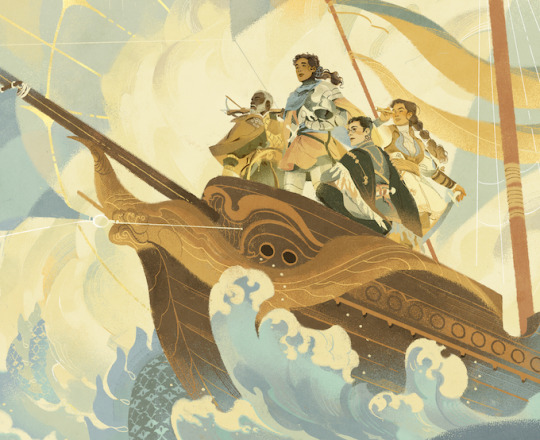
GM can plan or improvise. Scenarios can be planned ahead of time by the Seer, or improvised at the start of a session for GMs short on time.
Tarot cards instead of dice. They’re used for everything from scenario inspiration, to character backstories, to divination, to skill checks. No Tarot experience is required. Any deck can be used, but we recommend the Sefirot deck.

Dioscoria: a hidden isle of sages, adventurers, and ancient wisdom. Within the walls of this secret city are gathered the misunderstood, the persecuted, those unjustly punished for the way they live. Here they can flourish, and return to the world to wage their secret war against injustice and ignorance when they are ready.
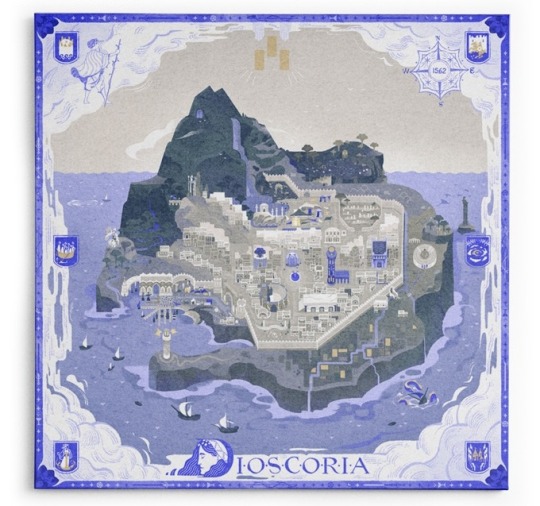
1562: It is a dangerous and disrupted time. Europe has embraced the innovations of gunpowder, and is using it to tear itself apart along religious lines. The Ottoman Empire is poised to break either Vienna to its west or the Safavid Empire to its east. European colonisers are spreading along the coastlines of the world like a hungry parasite. The Inquisition accuses, tortures and executes its victims across the Catholic world.
It is also a world of alchemy and sorcery. English magicians pry the mysteries of the stars. Ottoman scholars unravel the hidden design of the creator. Dioscorian mystics have mastered techniques to peer beyond the veil of time, and steer the world towards sanity.
Into this maelstrom step the agents of Dioscoria. Dioscoria's actors, magicians, assassins and paladins stand ready to defend the helpless and preserve wisdom. As these agents tackle scheme after scheme, and topple tyrants, cults and demonic forces, will they live up to their ideal selves, or embrace the darker parts of their own humanity?

Character generation: Characters’ backstories—their childhoods, their adult life, their emotional burdens and their ideals—are generated by consulting the Tarot for inspiration.
Burdens and ideals: Every character has a burden and an ideal. These are habits that threaten to engulf you, or values you are striving to live up to. Use them during play to make challenges easier, or become the person you want to be.
Skill checks: The Agent and the Seer each draw a hand of cards, based on the Agent’s skill and the challenge’s difficulty. Each plays a single card; the highest wins. The suit’s skill (swords, wands, cups or pentacles) acts as a trump suit.
Fortune cards: To avert failure, Agents may spend a fortune card to turn a failure into a success. Agents can jump in and help each other when all seems lost.
Solo mode: A favored Stretch Goal has been reached. Now you can play as an Agent in solitaire mode. The Cabinet of Extremis has chosen you to carry out their will on more dangerous missions than regular Agents undertake. You can also find the preliminary rules among the playtest materials.
Visions: Each Agent is blessed before each mission, and can receive glimpses of the past, present or future. Visions can be used to gain useful information, peer into a character’s fate, or add tension and stakes to a scene.

Harm: Harm can be physical or spiritual. Agents are usually harmed because of a failed challenge. Harm can severely impede an Agent, and lead to permanent trauma if untreated.
Abilities: Each character class has unique abilities. Occultists can curse with the evil eye. Performers can imitate their target perfectly. Hunters can spread panic by dispatching their enemies from the shadows. Just make sure your ability isn’t causing you more harm than you can tolerate!
Contacts: Your friends and allies in Dioscoria can help you grow. These personal connections help you train, prepare and reflect on yourself, and can teach you abilities you would otherwise never have access to.
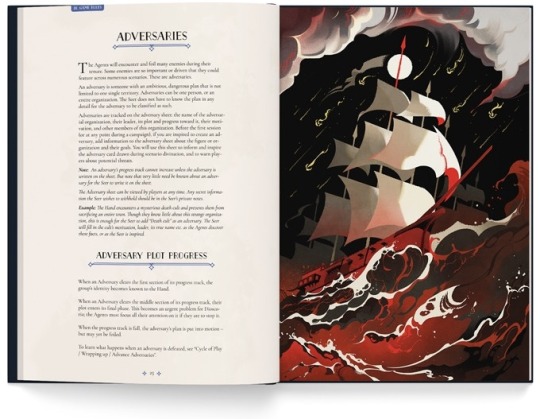
Territories: Dioscoria, and other cities, change over time: in response to player actions, or inspired by Tarot draws. This can create a unique geopolitical landscape: a world that branches off from our own history.
Scenario divination: For GMs who don’t want to prep ahead of time, scenarios can be generated on the fly by drawing Tarot cards and consulting the “Vision guide”. If you chain these scenarios together, you can generate entire campaigns with nothing more than a Tarot deck and a little imagination.
The Hidden Isle is inspired by Forged in the Dark, and its core is formed from that system’s style and dynamics. However, this is not just a reskin with Tarot cards: The Hidden Isle is an original and coherent game with its own feel and rhythm.
Play The Hidden Isle now!
If you’re curious how the rules come together, and how it feels to play, why not try The Hidden Isle yourself? To get started, just download the playtest materials:
Download Playtest Kit
We also have two pre-made scenarios for you that can be played immediately:
The Rialto Scrolls: Rescue a scholar from the Jewish Ghetto before her life's work falls into covetous hands.
The Face of the Enemy: Foil a spy sent to Dioscoria to bring the island under control.
And if you don't have a group at the ready, try the game with the preliminary solo mode!
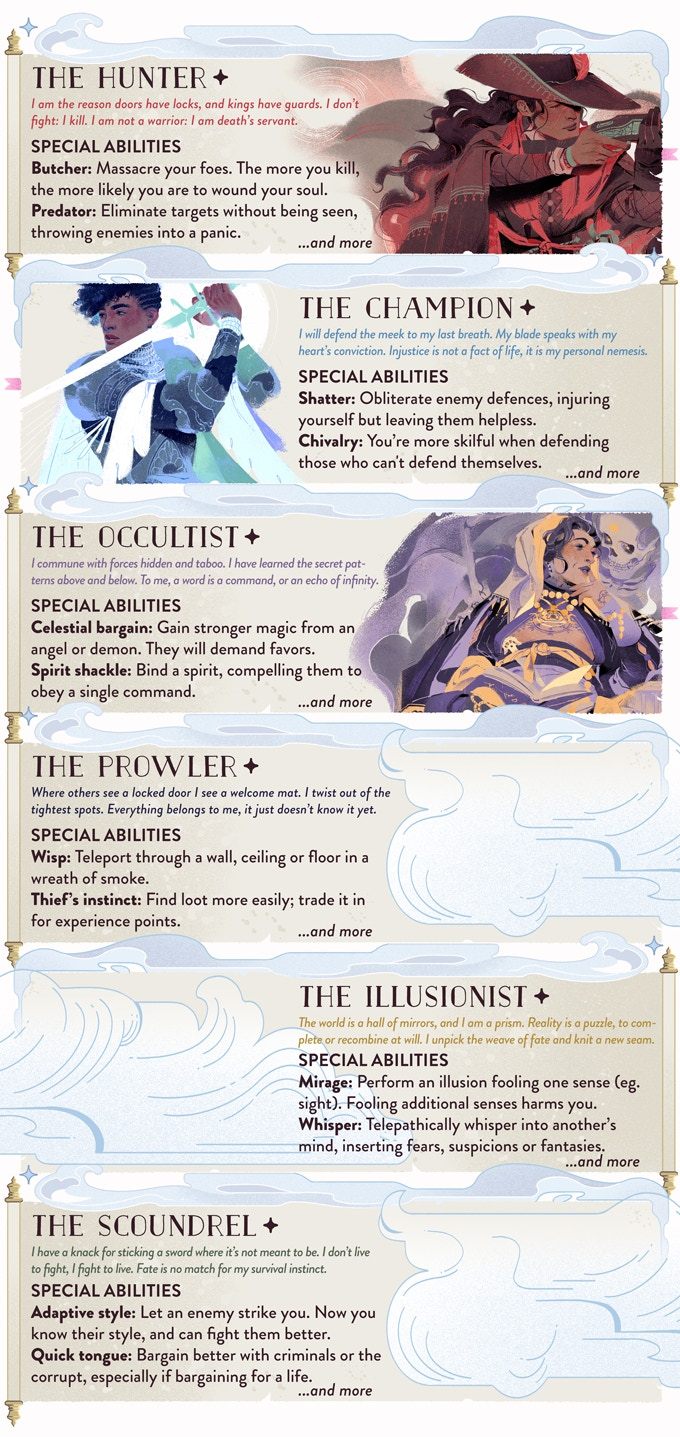

The Hidden Isle – an A4-size, gold-foiled, hardcover book of roughly 230 pages – contains the complete game rules, sections describing Dioscoria and the world of the sixteenth century, and all character classes and supplementary tables.

230+ pages of beautiful, elegantly laid out material. Bound in hardcover, clad in gold foil.
Complete game rules, including character creation, NPC generation and scenario generation using Tarot cards.
Five classes, each with eight unique abilities!
A flexible magic system featuring seven schools of magic and seven magical sources.
33 specialized items for your Agents to draw on during each mission.
24 historically inspired magical creatures.
A full, dedicated chapter on Dioscoria: its culture, origins, and a tour of the city.
A practical "Advice for Seers" chapter, giving you extra tools to help you run a game of The Hidden Isle.
A detailed section on the world of the sixteenth century,containing extensive lore on five major cities of the time, from various parts of the known world.
Tarot tables and references to help you understand any card, giving you multiple prompts for any situation to aid inspiration.
Additional materials for printing at home such as character sheets, reference sheets, Tarot tables are available via digital download.
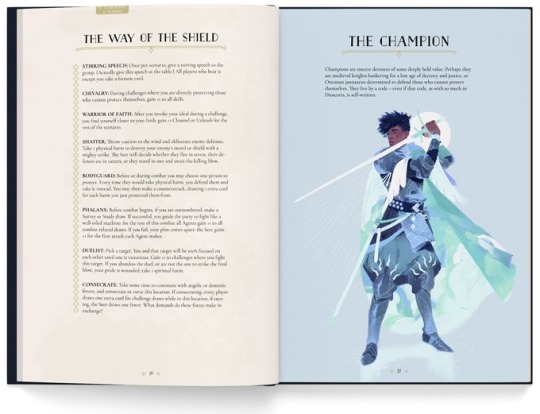
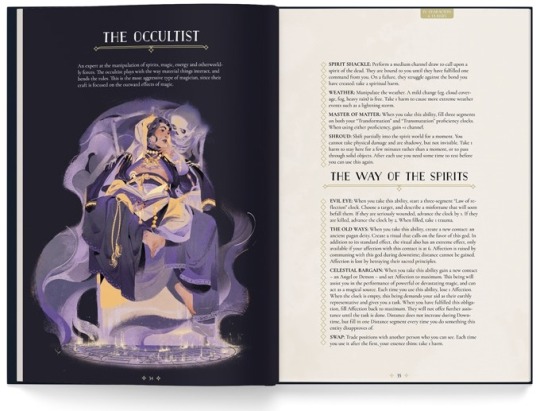
Kickstarter campaign ends: Sat, October 28 2023 3:55 PM BST
Website: [Causa Creations] [Sefirot Games] [facebook] [twitter] [instagram]
174 notes
·
View notes
Text
🐉 P I C K 🔵 A 🔵 C A R D 🐉
Close your eyes. Breathe deep. Open your inner eye to the tome of wisdom within. Let your mind flit over its pages and see what text sparkles into life. Then select a card from the Sefirot Tarot.
Will you pick left, center, or right? Let me know in the comments.

If you need more time to find your center and that moment of intuitive connection, take that time. Let yourself peruse that great book of knowledge inside you, sifting through endless pages. You won’t find everything you want, but your mind will open to what you need. Allow yourself whatever time you need to feel comfortable with that surrender to higher knowledge.
How does that feel? I hope it helped you center and find comfort with your inner guide.
Now pick a card (if you want) and read its message in the reveal.

Let me know how it resonates, and please share the post with those who might benefit from some guidance.
And if you need more in-depth and personalized guidance, schedule a reading with me on my site:




13 notes
·
View notes
Video
youtube
🔮 The Tree of Life Spread ✨
Originally developed by Rachel Mann the Tree of Life spread uses the Kabbalah and the spheres of the sephiroth to approach a single problem from a whole multitude of perspectives. With today's tidbit whether you're a seasoned kabbalist who trifles with the trionfi or just a tarot reader looking for a broader view of an issue you'll find this tree is sure to bear fruits. Music provided by RingingPyramid Come join your friendly neighborhood Satanist for a tarot reading LIVE on Twitch evenings 7PM-11PM EST
#tarot#divination#fortune telling#tarot spread#tarot reading#kabbalah#tree of life#esoteric#occult#sefirot#sephiroth#kether#chokmah#binah#da'at#chesed#gevurah#tifaret#netzach#hod#yesod#malkuth
0 notes
Text
art & mancias
Sefirot's staff, from Dioscoria Island, is announcing a new fundraising campaign in Kickstarter. Check the news here!

1 note
·
View note
Text
arte & mancias
La gente de Sefirot, el mazo de Dioscoria, está anunciando una nueva temporada de recaudaciones en Kickstarter. ¡Hay novedades! Más info aquí.

0 notes
Text
(it's all) Snakes and Ladders
This last year can accurately be described as a doozy. Christmas Eve I played a candy version of Snakes and Ladders with my niece, and witnessed first hand the disapointment of slipping backwards along a snake again. This year has been one hell of a game. After feeling like I was healing my foot after a calcaneous fracture, my mobility suddenly got worst- culminating with not being able to walk…
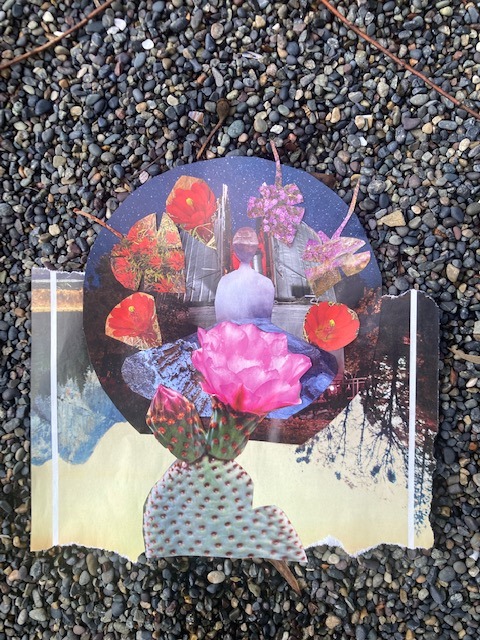
View On WordPress
#calcaneous fracture#disability#golden dawn#healing#hermetic society#hermit#kabballah#many moons#mobility#Quaballah#Rachel Pollack#Sefirot#seventy degrees of wisdom#Tarot#tree of life
0 notes
Text
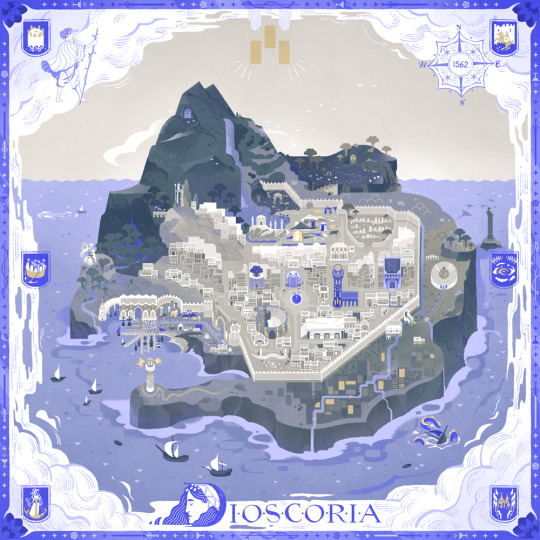
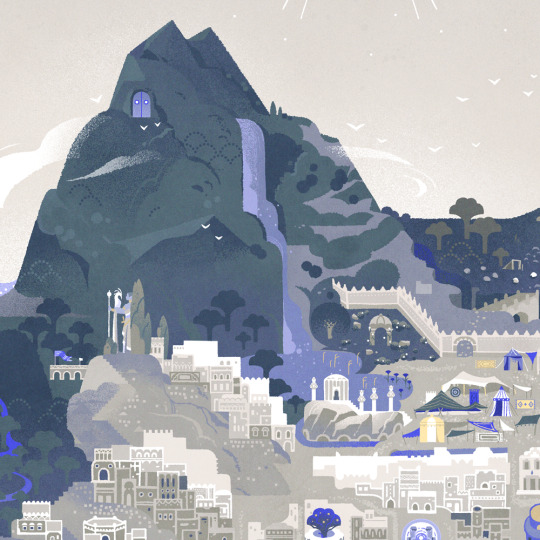
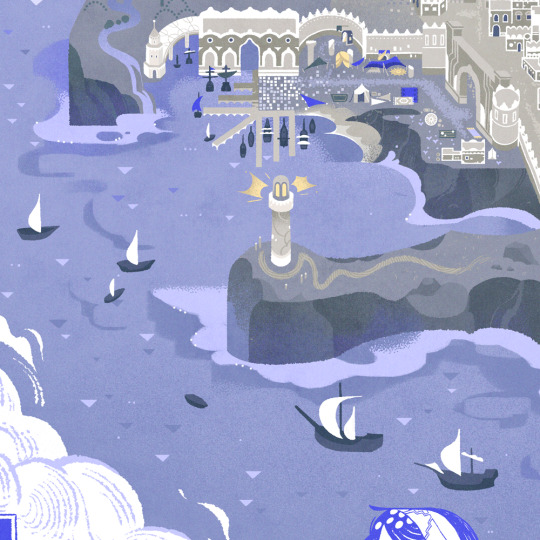
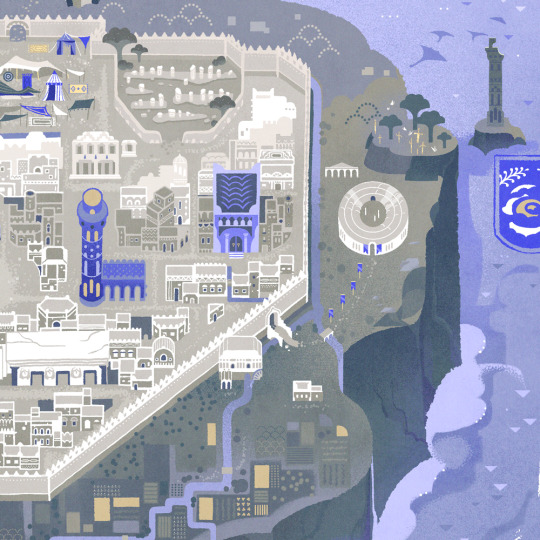
Discoria - The Hidden Isle 🌊
#illustrators on tumblr#artists on tumblr#illustration#ttrpg#the hidden isle#indie rpg#ttrpg community#island#map#nautical#maritime#seafaring#maps#sefirot tarot#Sefirot#had so much fun working on this map even though it took forever I'm so proud of it!#feel free to check out our newest Sefirot project
2K notes
·
View notes
Text
Explicación simplificada de la estructura del Árbol de la Vida
Explicación simplificada de la estructura del Árbol de la Vida
Hay realmente pocos libros modernos buenos de Magia(k) y aún menos los hay en español; los clásicos tienen un lenguaje oscuro o sencillamente se hace difícil sortear los saltos culturales aunque no tengan más de cincuenta años de editados y, aún más importante, el principiante no sabe discriminar la información. Con frecuencia sucede – a mí me sucedió también- que los grimorios resultan…

View On WordPress
0 notes
Text
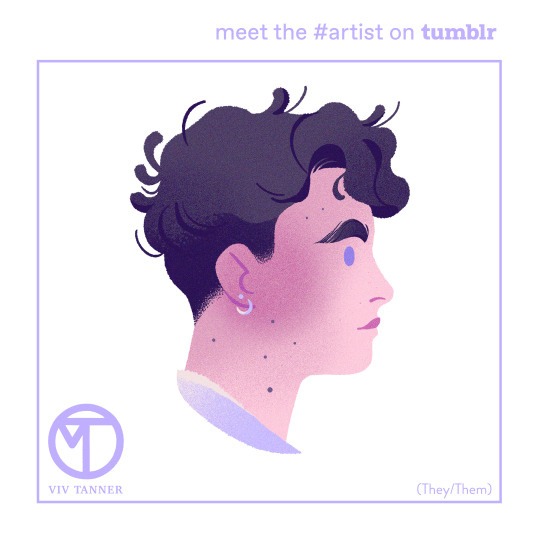
Meet the Artist: @vivtanner
Hello! I’m Viv Tanner, a Swiss freelance illustrator based in Austria. Whenever I’m not fighting monsters alongside friends in TTRPG worlds, I love to draw characters in atmospheric settings for books, games & more. Together with Eliot Baum, I’ve worked on projects like Sefirot - A Tarot Board Game, The Hidden Isle, and our comic Heart of Gold. Apart from that, I’ve illustrated covers for books and assembled my own small artbooks, like Naufrage & Agape. My passion lies in characters and their interactions, so I spend most of my free time creating art inspired by DnD campaigns/oneshots, which allows me to experiment with different styles as well.
Nice to meet you, Viv! Below are some pieces they have shared with you all.
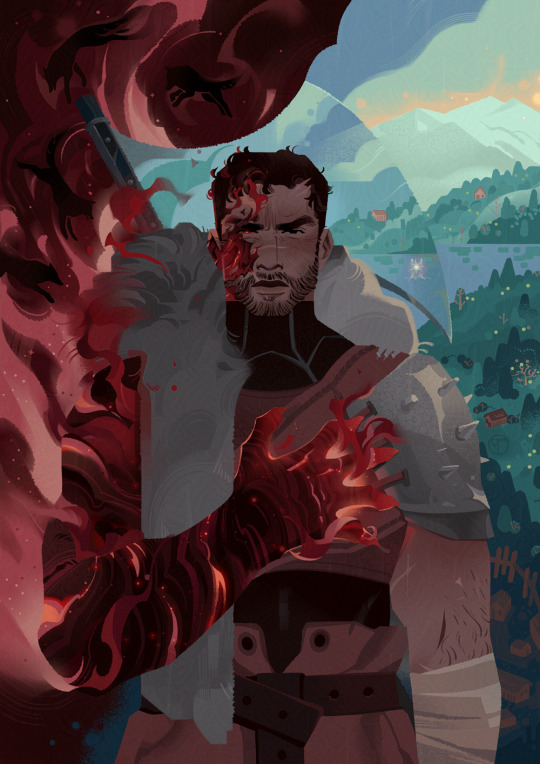
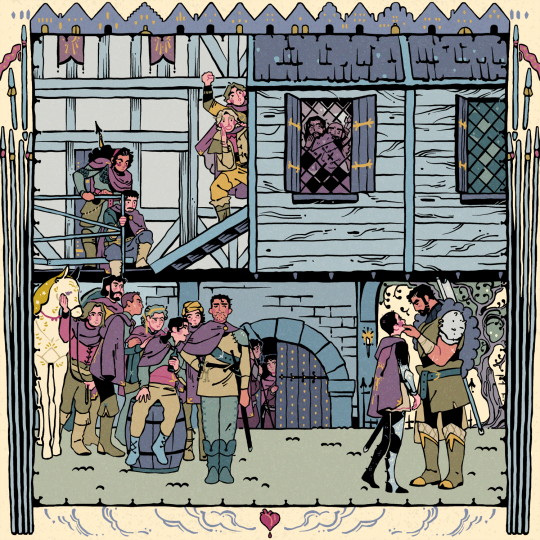
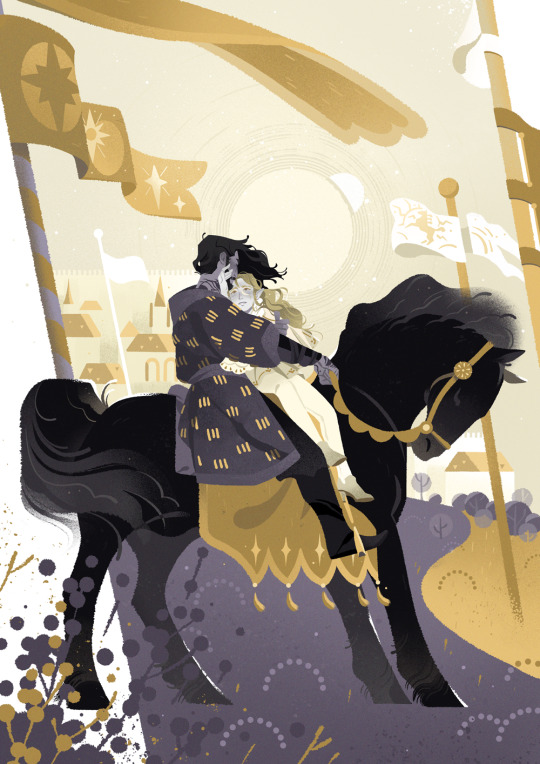
For more of Viv’s artwork, check out their Tumblr, @vivtanner!
1K notes
·
View notes
Text
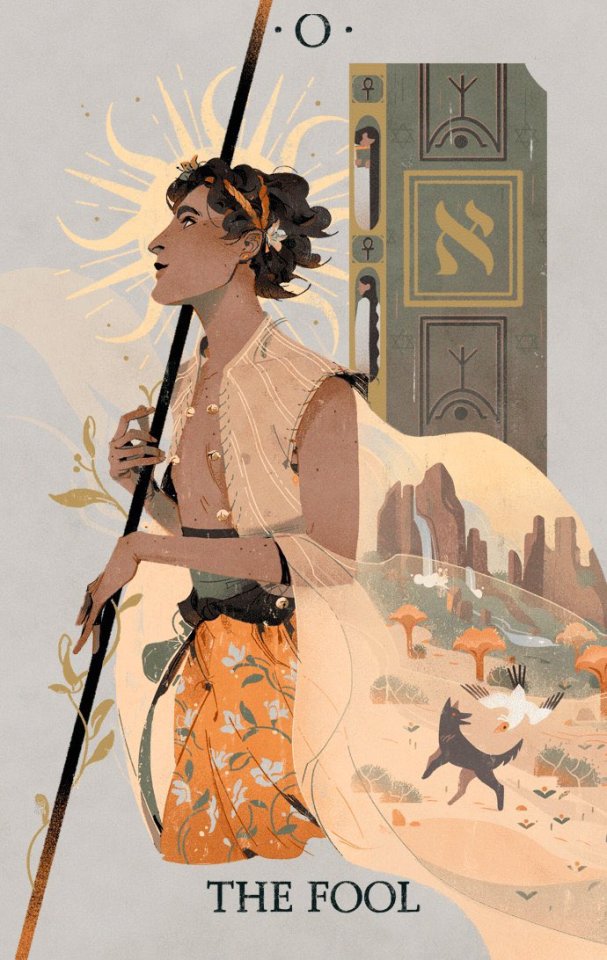

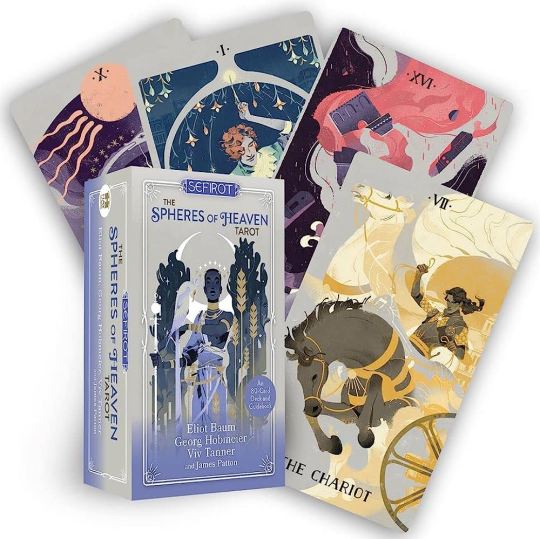
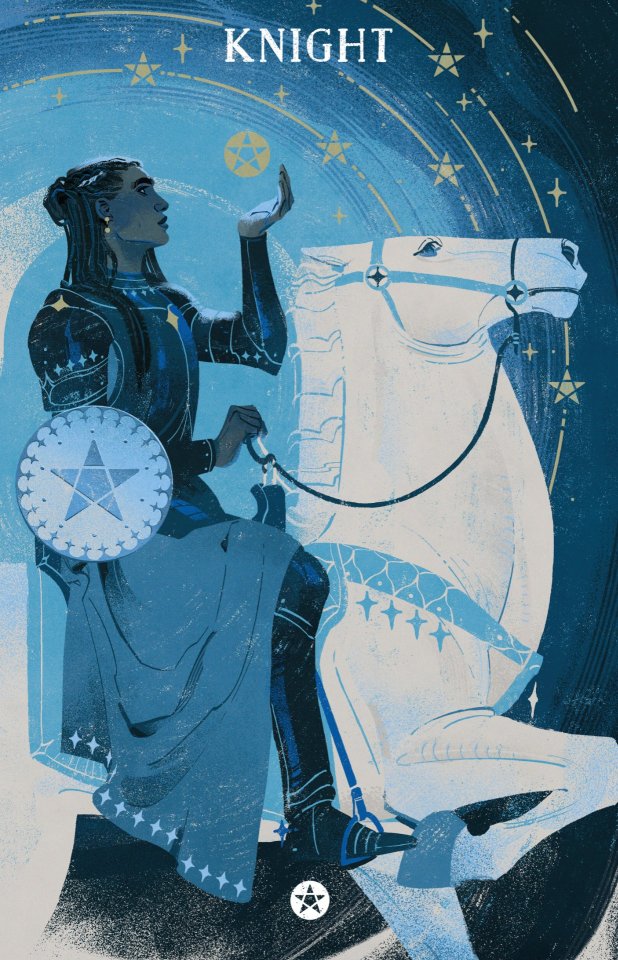

Our Tarot deck Sefirot got picked up by a publisher and just got released with a new version worldwide!
You can grab a copy here ✨
O child of ethereal and terrestrial song, Grasp this sword, for to thee it does belong. With chain mail gleaming, both pearl and ore, Thou art armored 'gainst life's tempestuous roar.
#art#artists on tumblr#illustrators on tumblr#illustration#tarot#tarot deck#tarot art#the fool#the hermit#knight of pentacles#knight of swords
7K notes
·
View notes
Text
Kabbalah in the Worldbuilding of Genshin Impact; Part 1: The Tree of Life, the Universe, and Everything
Edited for clarity, 12/6/23
Written by Schwan (@abyssalschwan on twitter) and Sabre (trashcanlore, @paimoff on twitter)
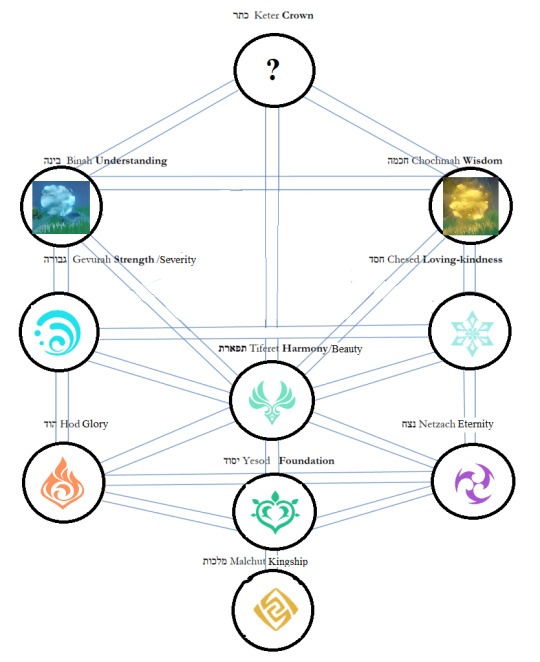
During the Sumeru Archon Quests, we learned that the Irminsul is a (real! (ish)) tree that grows upside down, seemingly underground, and that the roots of the tree are the Ley Lines, which extend throughout Teyvat and the Abyss. Irminsul stores all knowledge and memories in the world, and the Ley Lines are the mechanism by which the tree acquires this information. Ley Lines move elemental energy through Teyvat, and this energy acts as both a storage medium for information but also a resource that can be utilized for combat, alchemy, an energy source (Azosite), etc.
The origin of the name Irminsul (unique to the Western localizations) in combination with the many names from Norse mythology associated with Khaenri'ah, suggest that the inspiration for Irminsul is Yggdrasil, the world tree and central axis of the cosmos in Norse mythology. Here we propose an additional inspiration for Irminsul and the associated worldbuilding and elemental system of Teyvat: The Kabbalistic Tree of Life. In this model, Teyvat’s elemental energy is comparable to the creative energy described by Kabbalah as the foundation for the creation of reality and the spiritual world. Specific attributes of elemental energy can be channeled by unique individuals in Teyvat and these attributes manifest as distinct elements, which can be directly compared to the 10 sefirot, or emanations, described in Kabbalistic literature.
What is Kabbalah?
Kabbalah (lit. received, tradition) is a school of thought originating in Jewish mysticism. In general, Kabbalah focuses on the relationship between the infinite (God) and the finite universe and how it was created. The goal of studying this mysticism can vary depending on the school of thought and their motivations. Many of the esoteric and religious influences on Genshin lore and worldbuilding were influenced by Kabbalah, or vice versa. These include Gnosticism, Hermeticism, alchemy, Freemasonry, the occultist branches of Theosophy and Thelema (Golden Dawn), astrology, symbolic interpretation of the tarot (also specific to the Golden Dawn) and more [2]. In short, Kabbalah is everywhere. Additionally, its concepts are used as symbolism in several pieces of media that directly or indirectly inspired Genshin and other games in the Hoyoverse.
If you have frequented Genshin lore topics, you might have heard that one of the main sources of inspiration for its worldbuilding is Gnosticism. The problem is, Gnosticism is a bit vague or contradictory when it comes to how the world was created and how the whole existence thing works. At this current moment in the storyline of Genshin, we have very little information on the very beginning of existence in Teyvat. This information seems to be a crucial part of the “truth of the world” and appears to be purposefully hidden by powerful factions like Celestia. This entire theory was born out of trying to make sense of what little we know about the creation of Teyvat and comparing it to esoteric commentaries on the well known creation myth of the Torah (Old Testament). The “Biblical world structure” interpretation of Teyvat has been around since the early days of Genshin lore and with good reason; there are frequent mentions of the firmament, as well as the name Teyvat sounding very similar to the Biblical Hebrew word for ‘ark’ (although the grammar is a bit mangled). There are also several references to stories from the Bible in in-game texts, including Before Sun and Moon.
Kabbalah literature spends a lot of time trying to understand and describe the process of how the world was created and the underlying principles of reality, as well as how spiritual practice can change that reality (either metaphorically or literally). Kabbalah intends to describe the “true nature of God,” which is equal to the entirety of existence, as something very vast and completely impossible to grasp. This incomprehensible infinity emits an “limitless light” that is the origin of all creation. Elemental energy (the ubiquitous source of everything in Teyvat) is often found compared to light, something we’ll discuss in more detail later. The “limitless light” of Kabbalah is way too powerful for existence to bear, much like how elemental energy is to normal, non-Vision having humans. That’s why this light needed to be “filtered” down. This happens through the process of creation, which passes the light through the spiritual attributes that form the Tree of Life, which is like a sort of diagram for how the universe came into being [3].
The Tree of Life
The tree of life and its 10+ nodes, known as sefirot, is one of the most well-known concepts from Kabbalah to make its way into popular culture. As mentioned previously, the tree has been used as rule-of-cool symbolism in anime such as Neon Genesis Evangelion and Fullmetal Alchemist, two pieces of media that likely are significant influences on Genshin (If you doubt that HYV loves NGE, play some Honkai). The sefirot are also depicted on the floor of the Schicksal HQ map in Honkai Impact 3rd, for some reason.
The sefirot and their organization and interactions with each other can be found depicted in many ways, such as the tree format that is the most popular, or a spiraling nested scheme that is really cool, or even very stylized, like the work of Robert Fludd.
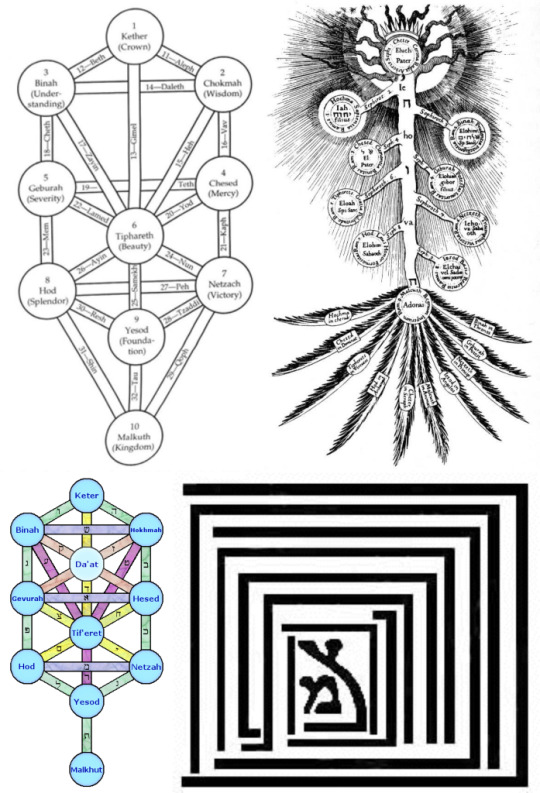
Sefirot
Sefirot comes from the root word in Hebrew meaning “to count,” but you can also find it translated as “sphere” in some texts. The term originated in a book on Jewish mysticism called the Sefer Yetzirah, or “Book of Formation/Creation.” which describes the combination of the “sefirot of nothingness” and the 22 letters of the Hebrew alphabet as the foundation of reality (remember the hypostasis codenames?).
The Sefer HaBahir (lit. the book of brightness, 13th century France) introduces the idea that the sefirot are emanations of the divine. Interestingly, this book refers to the sefirot as ma’amarot (sayings), which builds on an important concept in classical Jewish philosophy – the idea that God spoke the world into existence. [We’ll get back to the Sefer Yetzirah and the role of language in creating the world in a subsequent part of this theory]. Fontaine 4.2 era edit: HELL YEAH stay tuned for more about Oceanids!!
Historically, Kabbalah might have taken this rough concept from a very different school of thought: Pythagoreans or neo-Platonists. Briefly, the connection between the Pythagoreans and the Kabbalistic sefirot is that both groups considered the world as being made of numbers. This ties back into Genshin worldbuilding because of how much Platonism is related to Gnosticism. Something else to keep in mind is that Pythagoreans (who had a cool history that connected Egypt and Greece to the magic of ✨math✨ but also hey Genshin lore hello Deshret) were known to use lyres as their instrument of choice while making mathematical studies of music. More sus Venti lore for the collection? This is also interesting to consider in the context of Nahida, who is deeply connected to the Irminsul, and has animations that are reminiscent of computers.
Later in the 13th century, the Kabbalist Isaac the Blind would 'canonize' the list of sefirot (there’s still some variation to this day) and organize them into a sequence that would become the basis for the famous Tree of Life structure. His writings described the sefirot as attributes of the divine and their role in the creation of the world. In his model, the sefirot originated from lights that emerged from a primordial soup of potential, and these sefirot/lights would then ‘flow’ and emanate into each other. His student, Azriel of Gerona, expanded on this with a neo-Platonic lens and introduced the concept of the Ein Sof, the infinite nothingness that cannot be comprehended and is the origin of everything. In this model, being flows from an infinite resource of potential, which the divine can utilize through the framework of the sefirot, eventually creating the world [4]. In simple terms, the Ein Sof, which contains everything, emits a primordial light that then differentiates into the sefirot. In our Genshin analogy, this primordial light would be like extremely pure elemental energy that differentiates into elements, like light passing through a prism.
Moses Cordovero, an important figure in the development of Kabbalah, described the process of the sefirot differentiating with the analogy of light shining through a stained glass window:
Imagine a ray of sunlight shining through a stained-glass window of ten different colors. The sunlight possesses no color at all but appears to change hue as it passes through the window. The light has not essentially changed though it seems so to the viewer. Just so with the sephirot. The light that clothes itself in the vessels of the sephirot is the essence, like the ray of sunlight. That essence does not change color at all, neither judgment nor compassion, neither right nor left. Yet by emanating through the sephirot -- the variegated stained glass -- judgment or compassion prevails. (Pardes Rimmonim by Moses Cordovero, translated in Essential Kabbalah by Daniel Matt)
Cordovero considered the sefirot to be completely independent of each other, but the later Lurianic school of Kabbalah (we’ll get into them more in later parts) considered the sefirot to be constantly dynamically interacting with each other and also assigned them personas.
Achievement grinders amongst us may recall the descriptions of the namecards you get upon completing the Elemental Specialist achievement series:
Achievement: Colors of the Rainbow: Light can refract into countless colors, but people stop at seven because they're too lazy to count. Perhaps the elements are like that, too. Achievement: Seven Lights: Anyone can play a tune that belongs just to them, and like the dew under grass, can reflect the seven lights of heaven.
Another example of the elements being compared to light is the Latin text found on the magic circles on the door of Mona’s future house in Mondstadt and generated by the hypostases during their missile attacks. The text reads:
Ex culmine lucis in magno elementorum, which translates to "From the peak of light, to greatness of the elements."
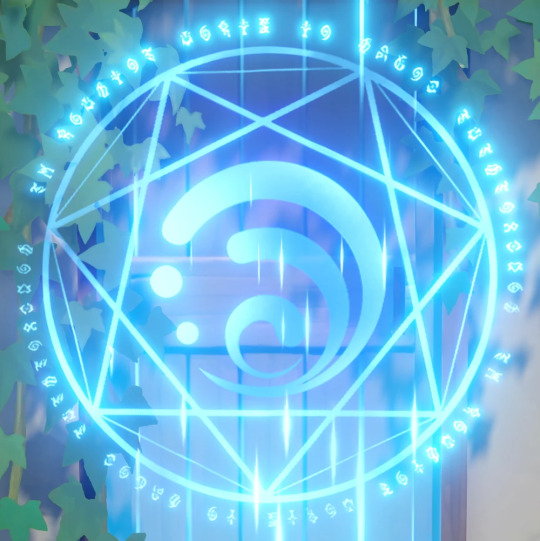
It’s interesting to see this text appearing in association with the hypostases since they are described as “life forms which have completely abandoned their former appearance and biological structure, making them able to reach the highest level of elemental purity. They are ultra-compact structures with a high mass, and are the highest forms of elemental structures.” The hypostasis code names are also all Hebrew letters, as mentioned earlier.
Mona’s astrolabe during the Unreconciled Stars event features a similar text:
Ex culmine locis in magno elementorum; Lux se effundat in mentes dei, which translates to "From the peak of light, to the greatness of the elements; May light pour out, into the minds of god."
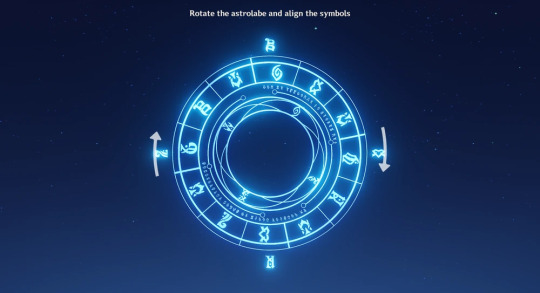
The Abyss Lector catalysts contain a text that mirrors these two examples:
Ex culmine lucis in mango obscuritas. Lux se effundat in mentes abysso, or “From the peak of light, to the greatness of darkness. May light pour out into the minds of the abyss.”
The Genshin elements are also described as flowing. For example, a loading screen tip specifically describes the Ley Lines as “A mysterious network that links the whole world together, within which flow the elements.” The Silver Twig description states: "All knowledge, memory, and experience flow through this giant tree, just like a stream flows into a river, the river joins a sea, the sea turns into clouds, and the clouds rain onto the ground — just like life itself."
Sefirot and the Genshin Elemental System
The 10 (sometimes 11) sefirot are:
Keter: Crown (this one is even more symbolic that the rest, is described as “the most hidden of all hidden things" in the Zohar, represent things that are above the mind’s comprehension and the very beginning of the process of turning potential into reality)
Chokhmah: Wisdom
Binah: Understanding/Reasoning
(Da’at: Knowledge, as a fusion of Chokhmah and Binah)
Chesed: Loving Kindness or Mercy
Gevurah: Strength/Severity, (sometimes Din, Judgement, or Pachad, Fear)
Tiferet: Beauty/Harmony, is associated with balance of the Tree of Life
Netzach: Eternity/Endurance
Hod: Splendor/Glory
Yesod: Foundation (as in, foundation of reality)
Malkhut: Kingdom/Sovereignty
You’ve probably noticed by now that while we are claiming that the concept of the sefirot applies to the elemental system in Genshin, there are 10 sefirot and only 7 elements (for now). Fortunately for us, the Kabbalists love metaphors and categories. In addition to the sefirot representing the procedure used to ‘emanate’ and create the world, there are other methods of interpretation that further subdivide and rank the sefirot. For example, one metaphorical interpretation of the Tree of Life assigns each of the sefirot to a part of the human body.
In some Kabbalistic traditions of interpreting the tree, the 10 sefirot are divided into two categories: Intellect (Keter, Binah, Chokhmah) and Emotions (they’re actually more like character traits), which contains the remaining seven. These categories are meant to parallel how the soul is also divided into the intellect and emotional components. The first three sefirot are also referred to as the “three mothers,” because they are the source of the lower seven [5].
Having a group of seven sefirot is very convenient for comparing their traits to the elements and their ideals, but what about the role of the higher three in Genshin worldbuilding? This next section requires a bit more conjecture than some other comparisons here.
The source of all elemental energy in Teyvat, whatever that actually is, could be compared to Keter (crown), the most hidden and incomprehensible of the sefirot. (Big stretch, but think of the crowns over the Irminsul trees in domains.)
Next, we have the Ley Lines, which contain dreams and memories (these are basically the same in Teyvat, see Dream Solvent description), and these can be compared to Binah (understanding/reasoning) and Chokhmah (wisdom). During the Sumeru Archon Quest, Rukkhadevata says that dreams are the source of the wisdom she upheld as her ideal. Memories play an important role in discerning the truth of the world, as the traveler has now found themselves to be the only person to remember certain people/events, and has been told to trust their memories rather than what they can see.
Comparison of the 'Lower' Sefirot to the Genshin Elements and Their Ideals
Chesed (loving-kindness); Cryo (unknown, theorized to be love)
The Cryo Archon’s ideal is theorized to be love, as it’s the only characteristic mentioned in relation to her in the Travail trailer. Wanderer’s voiceline about her directly mentions love and describes her as being kind and benevolent, while Childe describes her as extremely gentle. These are the characteristics of Chesed, which represents the trait of completely selfless love: the all forgiving, all giving love of a god towards their creations. When it comes to the Cryo element itself, two things are worth mentioning: one is the way that all of Snezhnaya is perpetually covered in snow, as if this were the (ironic) physical expression of the Tsaritsa’s love blanketing them. The second is the promise of a world-encompassing snowstorm that will envelop everything as the Fatui advance on their war against Celestia. Although it’s hard to find one absolute constant in Vision granting stories, it’s notable that most Cryo users got their Vision at a moment when they had to selflessly be there for others (Diona, Chongyun, Mika), or after a decisive moment where they put aside their personal comfort for an ideal that would result in benefit for others (Kaeya, Eula, Layla).
Gevurah (Severity); Hydro (Justice)
Gevurah is associated with divine judgment, the kind that punishes humanity and causes world-altering catastrophes like the flood or the expulsion of Adam and Eve from the Garden of Eden. The Hydro Archon organizing her nation around a Court that attempts to judge both deities and humans parallels this. In a more positive sense, Gevurah is also related to moral judgment that allows one to tell good from evil. Likewise, Hydro in-game is often associated with purity and separation of clean and unclean matter. When it comes to Hydro Vision wielders, one common characteristic is that they all live by a personal ethical code, and their commitment to it is what granted them their Vision.
Tiferet (Beauty/Harmony); Anemo (Freedom)
Tiferet balances the other sefirot on the tree and has direct connections to almost all of them (except for Malkut). Similarly, Anemo can facilitate many elemental reactions via its Swirl reaction. In our opinion, something almost all the Anemo characters share is that their moment of receiving a Vision coincides with a moment of balance and harmony with themselves or their environment. See Jean and Kazuha’s Vision stories and the cutscene where Scaramouche/Wanderer gets his Vision. As an aside, comparing harmony to Anemo is funny because Venti is a bard and harmony is also a musical term: in music theory, harmony is the way we analyze the interactions between different voices that can be heard at the same time.
Netzach (Eternity); Electro (Eternity)
The quality of “Eternity” in Netzach is related to victory against enemies, referring to eternity as being the most powerful combatant remaining among defeated adversaries. Likewise, in Genshin the story of the Electro Archon features many battles during the Archon War where Ei and Makoto ended up victorious. As for Electro users tend to have their Vision granted at a moment when their ambition “defeated” the obstacles of reality, as was the case with Fischl, Kuki and Lisa. Cyno’s Vision story makes sense when you compare it to the illumination of Buddha during meditation, and how this was victory over the temptation of the demon Mara.
Hod (Glory); Pyro (War)
Natlan and its Pyro Archon are possibly the most mysterious of all the regions, so we can only speculate. We know that the Pyro Archon is called the God of War, and that the Pyro Gemstone mentions battles, pilgrimages and truth. The sefira of Hod, translated as Glory or Splendor, is linked to being able to connect with God and therefore also associated with prophecy (as in the way a human can carry a message from God). In the Travail trailer, the Pyro Archon tells the traveler that “the rules of war are woven in the womb.” It's also theorized Natlan will be based on Mexica culture (where sacrifice of both enemies and self sacrifice was a way to connect with the gods) and via Iansan's name, the Caribbean diaspora version of Yoruba religion (where many rites involve the gods making themselves present in the material world).
Yesod (Foundation); Dendro (Wisdom)
Back when we started to think about this theory during version 2.8, we decided on Yesod largely via process of elimination. One piece of our rationale was that in the Jewish tradition, each of the lower seven sefirot are used to represent a primary personality trait of seven archetypal figures in the Torah. The person related to Yesod is Joseph, who is well known for his prophetic dreams, and because of the events of the Golden Apple Archipelago, we decided that was close enough. However, the 3.x version confirmed that a) Irminsul did actually exist, b) Dendro as an element has a deep relationship with the tree, with the Dendro Archon acting as its avatar, c) the ideal of wisdom as both Dendro Archons interpreted it has a lot to do with dreams, and d) Irminsul and the Ley Lines act as the foundation for how reality is perceived in Teyvat. Yesod is also associated with biological life, as it represents the reproductive organs in the human body scheme of the sefirot.
Malkut (Kingship); Geo (Contracts)
Malkut is associated with the connection between the spiritual "above" of the Tree of Life and the concepts it contains, and the "below" of the material world, where these concepts manifest into material reality. For this reason, Malkut is associated with the earth [6]. In many Geo item descriptions, like the Geo Hypostasis drop or Albedo's elemental skill, the motif of geo trying to reach the sky is a constant. From a religious POV, the relationship between the divine and humans living in the material world has also been one of "covenants," or "pacts", in a similar way to how the Geo Archon is the God of Contracts. Furthermore, contracts are the basis to have a working state (government), and a kingdom is one of the first forms of a state. Malkut also being related to earth and everything material parallels how Geo is an element that works in making constructs. Geo Vision users are likewise involved in making or maintaining structures, like the Knights of Favonius is for Noelle, or the tradition of alchemy is to Albedo, as well as opera to Yunjin and in a way, even the Oni identity for Itto.
The Origin of Evil and Why Irminsul is Upside Down
Tighnari tells us that Irminsul is a tree that “grows downward rather than upwards,” or in other words, it’s upside down. This isn’t the only time that we’ve encountered things in Teyvat being described as upside-down or mirrored, and as it turns out, there is a similar scenario described in Kabbalah. Throughout Kabbalistic discussions on the origin of evil in the world (both material and spiritual), a central idea developed is the existence of a mirrored or inverse Tree of Life that forms the demonic realm of evil. The Zohar, a foundational work of Kabbalistic literature, spends a considerable time discussing the origins of evil - there are more than 5 creation myths for the concept of evil! Two of these myths describe the formation of an inverse Tree of Life, called the Sitra Achra (literally “other side”). This tree is constructed out of corrupted fragments of divinity that did not make it through the creation process, and therefore became evil forces [7]. Evil is typically represented as either a shard (like of broken pottery) or as a husk/shell (Qlippoth in Hebrew). Sound familiar? We actually have an enemy with this name in-game; the "shadowy husks" (the CN name for these enemies literally translates to "empty shell").
Unlike the very well defined 10 sefirot of the Tree of Life, Kabbalists don't agree about the identities or number of the demons that form the Sitra Achra. Some names for these demons are consistent; such as Lilith, Samael, and Asmodeus, who make a sort of "mother, father, son" trio. As for the rest, scholars generally agree that Kabbalists blended traditions from nearby cultures depending on where they lived, leading to Arabic, Spanish and Germanic legends mixing into the Jewish tradition [8]. There's a strong possibility Hoyoverse did something similar and filled in the missing names with the names of the demons of the Ars Goetia, creating a system where the mirrored sefirot are “ruled” by demon gods, aka, the Archons. This implies that the reason Teyvat is upside down is because it is actually on the “other side.”
Neuvillette, About Us: Witness: Since you hail from beyond the stars, I invite you to be my witness as I judge this upended world…”Though we live in a world of disarray, I shall undertake to restore all that has been broken”.
[Fun Fact: The Zohar describes the construction of the Sitra Achra as a series of knots that arrange the demonic equivalent of sefirot, called either crowns or “breaths,” into a mirrored Tree of Life configuration [7]. ]
The primary goal of the Sitra Achra is to steal and absorb the divine energy of the Tree of Life to maintain its existence, in the hopes of gaining enough energy to destabilize the system [9]. The way Genshin's Archons use their Gnoses is similar to this system. In the Flower of Paradise Lost artifact lore, the Goddess of Flowers explains to Deshret and Rukkhadevata that when the Seelie race was disgraced, they lost their connection to Heaven and their power of "enlightenment". Later, Celestia would facilitate the Archon War with the promise that each winning god would be granted a Gnosis that would give them exceptional power. Both Nahida and Venti have described the Gnoses as being a very advanced tool that concentrates elemental energy. So far, Archons have had inherent elemental powers related to their nature, but when it comes to using large amounts of elemental energy through their Gnoses, they aren't creators but channelers of it, just at a much larger scale than humans who have Visions. Edit: and yes, there is the most recent revelation about the origin of the Gnoses that is extremely relevant to this comparison, but deserves its own space to be properly expanded on.
However, this doesn't mean Teyvat is condemned. Just as the Traveler has slowly been setting the chaos of elemental energy back into order (by, for example, returning the elemental Oculi to the Statue of the Seven, among many other things), so too is there a concept in Kabbalah describing the importance of righting the wrongs of the universe so that the sefirot are stable and creation is in harmony with the divine. This is called Tikkun Olam, or the repairing of the world.
Stay tuned for part 2 where we go into wayyyyy more detail about what this means for the Traveler's journey through Teyvat! 4.2 Edit: and of course will we will be talking about the most recent Gnosis revelation, as well as the Narzissenkreuz Ordo antics :D
References:
https://www.chabad.org/library/article_cdo/aid/170308/jewish/What-is-Kabbalah.htm
https://en.wikipedia.org/wiki/Hermetic_Qabalah
Kabbalah - Origins of the Sefirot and Tree of Life - Isaac the Blind Saggi Nehor & Azriel of Gerona
Mystical Concepts in Chassidism - Schochct, Jacob Immanuel, chapter 2
Mystical Concepts in Chassidism - Schochct, Jacob Immanuel pg 66-67, Tanya ch. 3
Rebbe Nachman of Breslov, Likutey Moharan I, 12:1 via Wikipedia
The Origins of the Klippot / Qliphoth & Sitra Achra in the Zohar - Kabbalah on the Problem of Evil
https://www.jewishvirtuallibrary.org/demons-and-demonology
9. Evil in Early Kabbalah - Emanations of the Left Hand Side - Origins of the Qliphoth / Klippot
#genshin#genshin impact#genshin lore#please tell me you get the joke in the title XD#the kids do not know about 42
415 notes
·
View notes